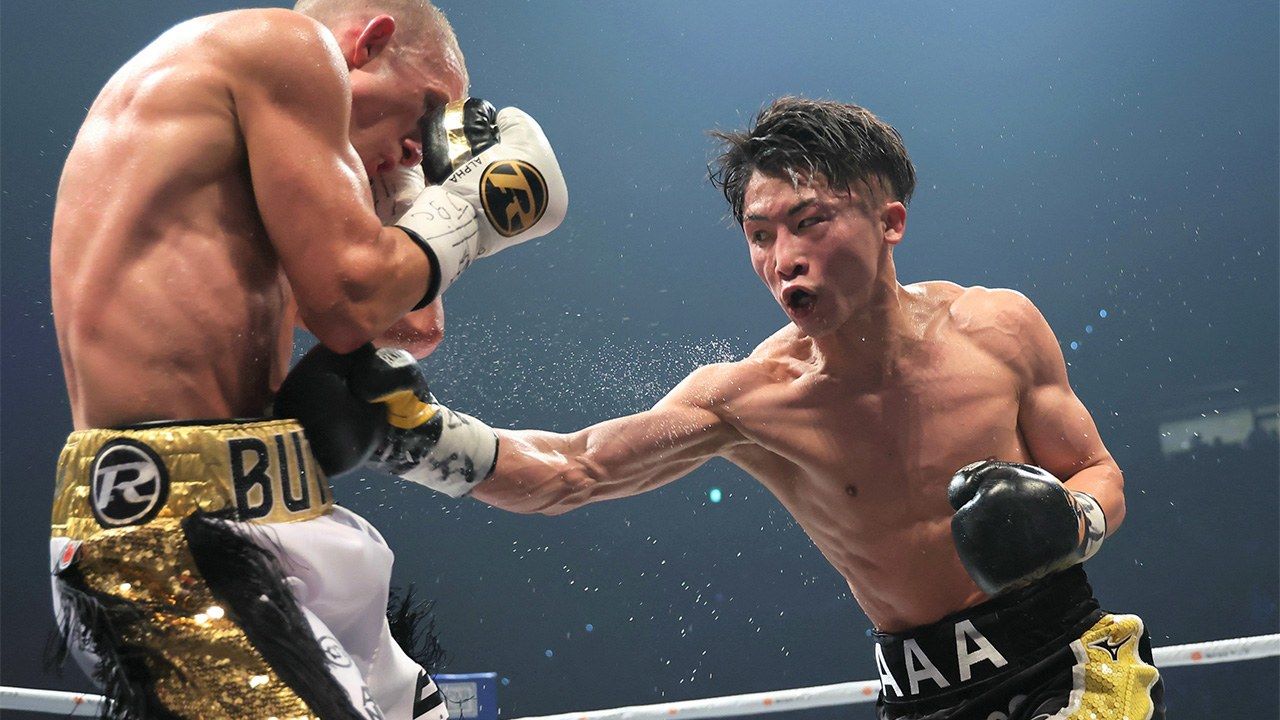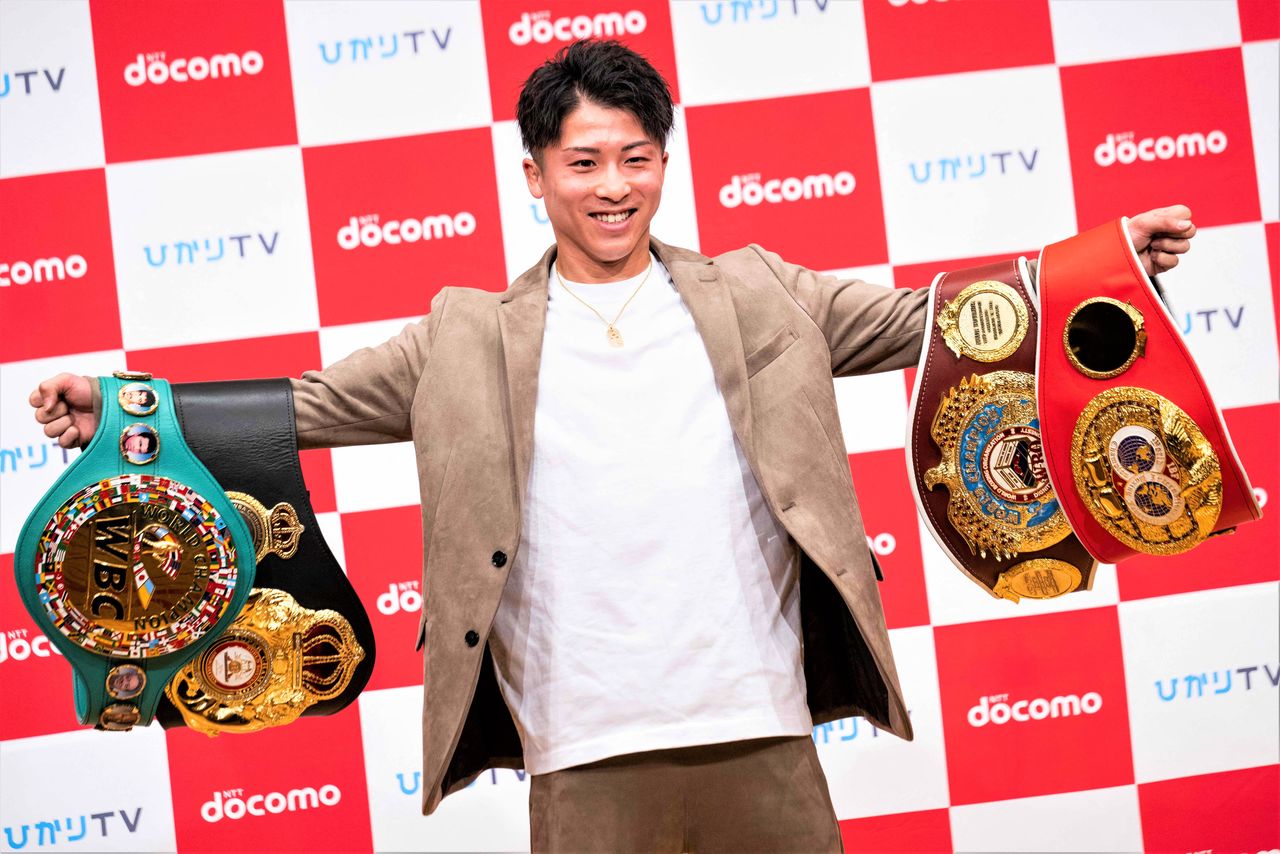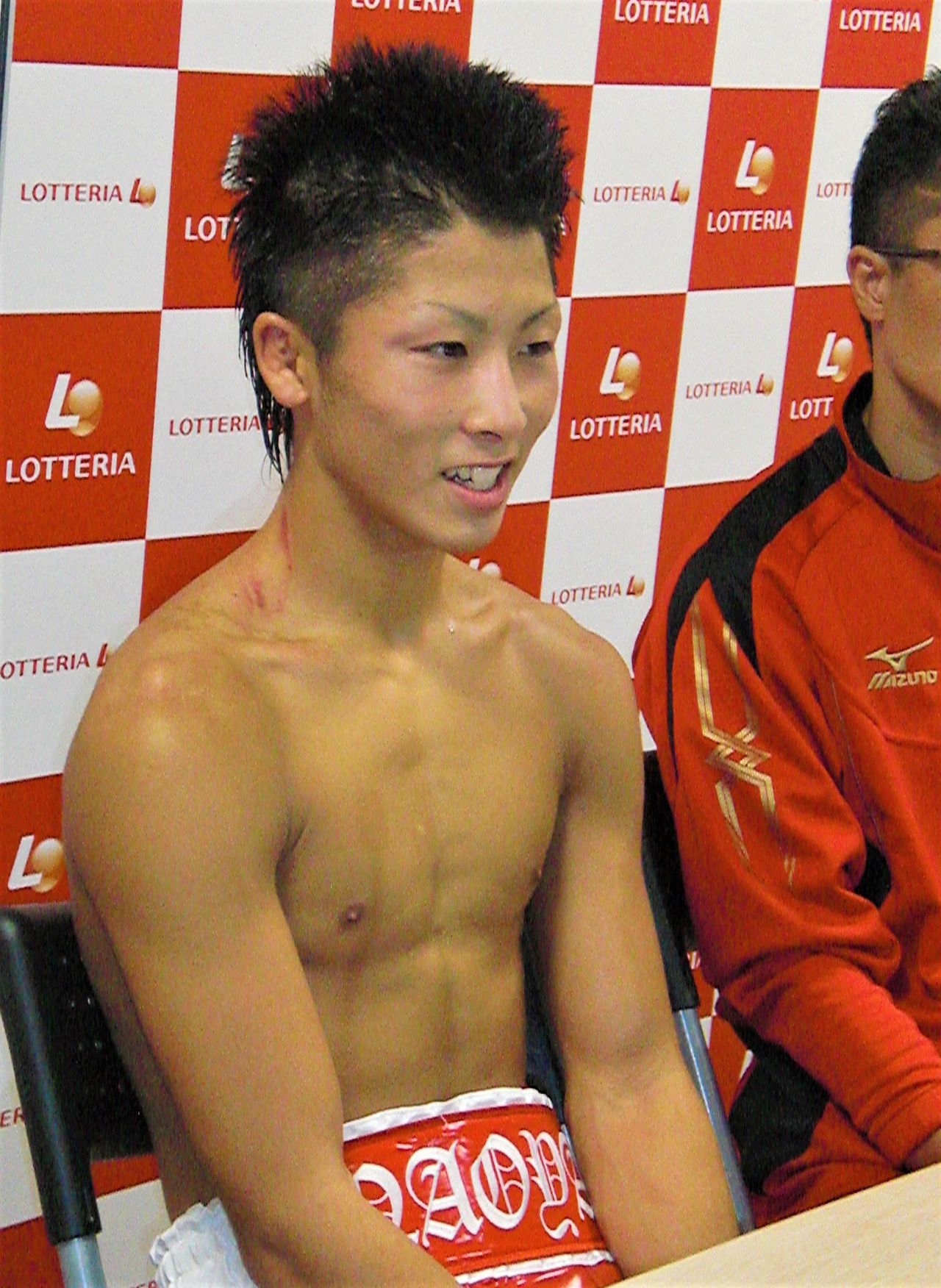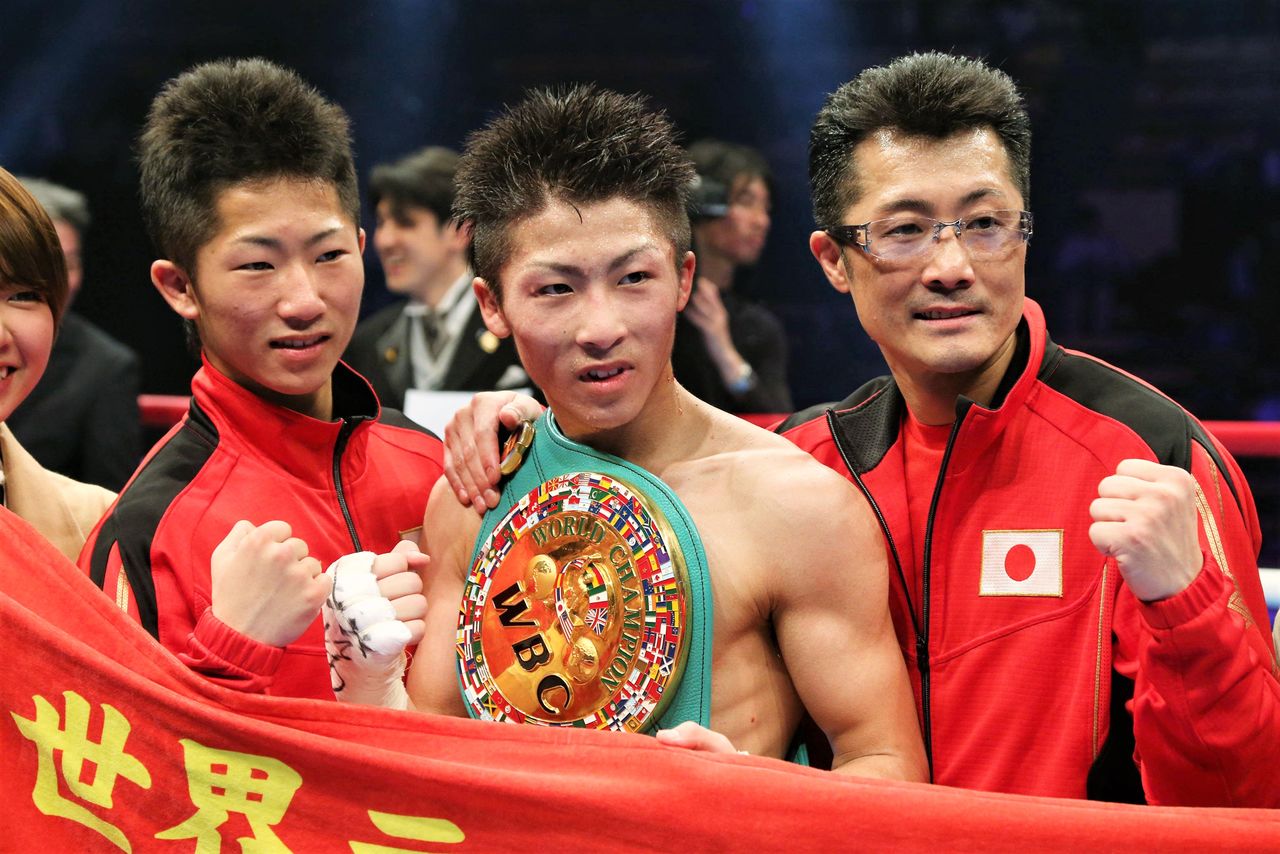
Inoue Naoya: Japan’s Boxing Monster Aims for Undisputed in Second Weight Class
Sports- English
- 日本語
- 简体字
- 繁體字
- Français
- Español
- العربية
- Русский
Nothing Left to Achieve at Bantamweight
On January 13 of this year, fresh from completing his conquest of the bantamweight division, Japan’s boxing hero Inoue Naoya unveiled the next phase of his career. Joined by gym chair Ōhashi Hideyuki, the boxer announced at a press conference in Yokohama that he was moving up a weight class, declaring, “As of today, I am vacating all four of my titles.” Giving his reasoning for the bold move, Inoue stated that “there’s nothing left for me to achieve at bantamweight and no opponents I want to face, so I’ve decided to take on the challenge of super bantamweight.”
Just one month earlier, Inoue defeated Britain’s Paul Butler to complete his belt collection by adding the WBO title. The announcement also came only four years and eight months since the fighter opened his bantamweight silverware account with the WBA belt in May 2018. While an eventual move up in weight was not unexpected, as Asia’s first-ever four-belt world champion, the first undisputed champion at bantamweight, and only the ninth male fighter in history to clean out all four major titles in his weight class, there were some who felt he could have taken a little more time to revel in his achievement.
When asked about this at the press conference, Inoue responded: “Having won all four belts, there is nothing left for me at bantamweight, so it made no difference when I gave the titles up. Of course, belts are precious, but you can’t cling to them forever. I spoke to Ōhashi, and we settled on the timing together.”
To the boxer nicknamed “The Monster,” even the accolade of undisputed champion seems like little more than a steppingstone. Even within the context of Inoue’s glittering career to date, 2022 was a special year, and one that I feel warrants looking back on.

Undisputed bantamweight world champion Inoue Naoya shows off his four belts on January 13, 2023, in Yokohama, Kanagawa Prefecture, shortly before announcing his plans to vacate them and move up to super bantamweight. (© AFP/Jiji)
In June, he put his WBA and IBF belts on the line in a rematch in Japan against WBC titleholder and four-weight world champion Nonito Donaire of the Philippines. While their previous encounter had seen Inoue triumph by decision after a grueling 12-round battle, this time he dispatched his illustrious opponent by TKO in only the second frame to take home his third belt.
It was a victory that prompted venerated US boxing magazine The Ring to install Inoue above some of the fight game’s biggest names at number one on its men’s pound-for-pound list. As the first Japanese fighter to receive this accolade since the journal began publishing its pioneering ranking of the best fighters across all weight classes more than three decades ago, the move sent shockwaves around the world.
Even the normally reserved Inoue expressed his joy at the announcement: “As a boxer, it’s a great honor to receive such recognition for the hard work I’ve put in to get here. And this will provide me with further motivation to make sure I live up to the role.”
But the year’s crowning glory came in December, when he finally achieved his long-held goal of unifying all four major belts (WBA, IBF, WBC, and WBO) to become undisputed bantamweight champion. Having explained in advance that collecting all four titles was the clearest way to prove his quality as a fighter, Inoue put the final punctuation mark on this page of boxing history by stopping the aforementioned Paul Butler in the eleventh round of their contest in Tokyo.
Bringing Newfound Popularity to Boxing in Japan
Another kind of recognition came last October, when Inoue placed fourth behind popular stars Ohtani Shōhei, Hanyū Yuzuru, and Suzuki Ichirō in the Sasakawa Sports Foundation’s annual multi-generational survey of Japan’s favorite athletes. It was the first time since the survey began in 1992 that a boxer has ranked so highly, illustrating the fighter’s status as a genuine crossover star who has significantly raised the profile of his sport among the Japanese public.

Inoue speaks to the press on October 2, 2012, after marking his professional debut at the age of 19 with a KO victory at Tokyo’s Kōrakuen Hall. (© Jiji)
Nonetheless, as mentioned above, 2023 is set to represent a major turning point in Inoue’s boxing career. Though the move from bantamweight (53.5 kg) to super bantamweight (55.3 kg) represents a jump of less than two kilograms, there is much intrigue in how this may affect Inoue’s performance.
At the January 13 presser, Inoue himself had the following to say: “I think the extra 1.8 kilos will be a positive. It was getting harder for me to make the bantamweight limit, and, in truth, against Butler, I didn’t have my legs 100 percent underneath me.” While he asserted that super bantam would allow him to box from a stronger footing, he also acknowledged that his opponents will be bigger and tougher, adding confidently that “if I prepare properly, all those positives and negatives should balance out.”
After the Butler fight, Inoue revealed that he had been unable to mount his offense as desired because his thighs were on the verge of cramping. His assumption is that with the easier weight cut, at super bantamweight he will feel stronger and be able to move with better balance. But it remains to be seen how he will contend with the larger stature of foes.
When fighting a taller opponent, the distance needed to close is a fraction longer. Even a difference of one or two centimeters can diminish the force of punches to the extent that a blow that may have put down or stunned a smaller adversary might not have quite the same impact. There is also the fact that heavier fighters naturally tend to hit harder, something that will require Inoue to stay on his toes defensively.
Inoue’s admission that he may have to adjust his approach reflects an understanding that the style that has brought him this far may not be enough for him to run through the super bantamweight division quite so easily.

Inoue, flanked by his younger brother Takuma and father Shingo, after winning the WBC light flyweight title in April 2014. (© Jiji)
Hitting the Ground Running
Moving up in weight is nothing new for Inoue. He began his career at light flyweight and then jumped two weight classes to super flyweight before settling in at bantamweight. But having admitted at the recent press conference that bantam is his natural weight, Inoue will not be taking the extra 1.8 kilograms lightly. Indeed, it seems he has already been preparing for this latest step up for over a year.
In November 2021, he hired former three-weight world champion Yaegashi Akira as his physical trainer, something he confirmed on record was geared toward his future activities at super bantamweight rather than bantamweight.
While some may feel it was premature to start bulking up while still competing as a bantamweight, Inoue sees things differently. However, he admits that even after more than 12 months of preparation, his physique is still not where it needs to be for the rigors of his new, higher class. It clearly is not a transformation that can take place overnight.
At present, the super bantamweight division is home to two champions, each holding two of the four major belts: WBC and WBO champion Stephen Fulton of the United States and WBA and IBF champion Murodjon Akhmadaliev of Uzbekistan.
Inoue has made it his goal to repeat his exploits at bantamweight and capture all four super bantamweight titles––a feat that could see him become the first-ever two-weight undisputed champion in men’s boxing history.
The first step on that quest is expected to take place in Japan this July, with Inoue taking on Fulton at Tokyo’s Ariake Arena. On paper, it is a fascinating matchup against two undefeated fighters. The 28-year-old Fulton is 24–0 with 8 wins by knockout and Inoue, who turns 30 in April, is 24–0 with 21 knockouts. Along with the slight age difference, Fulton’s slick skills and longer reach make it a difficult contest to call.
With Inoue having resolved to retire at 35, super bantamweight seems likely to be his final weight class. Fans in Japan and elsewhere will be watching with interest to see if he can live up to his reputation as “The Monster.”
Inoue Naoya, profile
Born in Kanagawa Prefecture in 1993. Began his amateur career while still at high school, compiling a seven-fight record before turning professional in July 2012 at the age of 19. Set a new Japanese record for the fastest run to a world title by claiming the WBC light flyweight crown in only his sixth pro fight. Captured the WBO light flyweight title in December 2014 and then bantamweight title in May 2018, becoming the fastest boxer in Japan to win three weight classes. In January 2023, vacated his four bantamweight titles and moved up to super bantamweight.
(Banner photo: Inoue Naoya lands a body shot on Paul Butler on December 13, 2022, in the fight that sealed his status as undisputed bantamweight champion. © Jiji.)